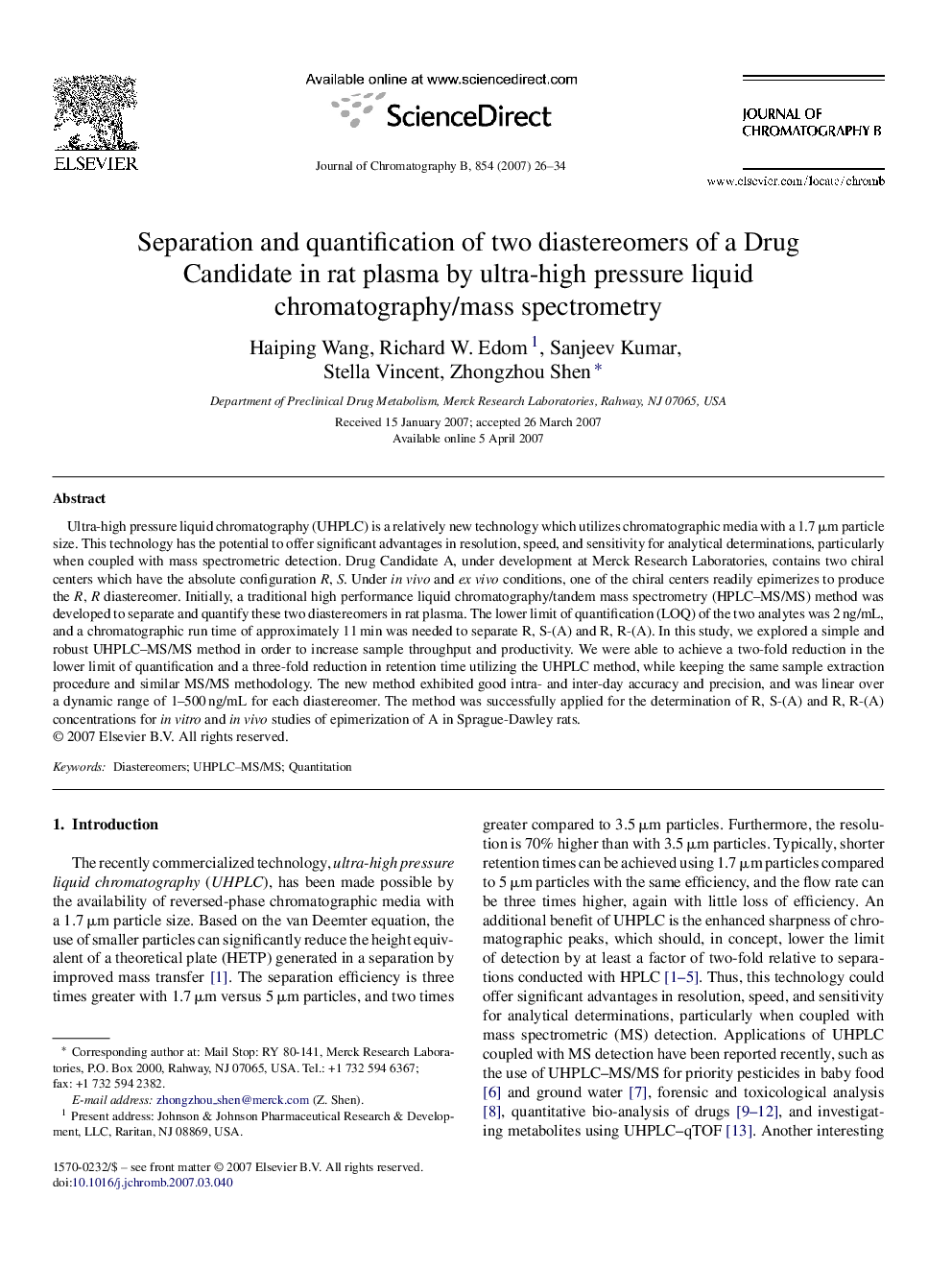| Article ID | Journal | Published Year | Pages | File Type |
|---|---|---|---|---|
| 1217785 | Journal of Chromatography B | 2007 | 9 Pages |
Ultra-high pressure liquid chromatography (UHPLC) is a relatively new technology which utilizes chromatographic media with a 1.7 μm particle size. This technology has the potential to offer significant advantages in resolution, speed, and sensitivity for analytical determinations, particularly when coupled with mass spectrometric detection. Drug Candidate A, under development at Merck Research Laboratories, contains two chiral centers which have the absolute configuration R, S. Under in vivo and ex vivo conditions, one of the chiral centers readily epimerizes to produce the R, R diastereomer. Initially, a traditional high performance liquid chromatography/tandem mass spectrometry (HPLC–MS/MS) method was developed to separate and quantify these two diastereomers in rat plasma. The lower limit of quantification (LOQ) of the two analytes was 2 ng/mL, and a chromatographic run time of approximately 11 min was needed to separate R, S-(A) and R, R-(A). In this study, we explored a simple and robust UHPLC–MS/MS method in order to increase sample throughput and productivity. We were able to achieve a two-fold reduction in the lower limit of quantification and a three-fold reduction in retention time utilizing the UHPLC method, while keeping the same sample extraction procedure and similar MS/MS methodology. The new method exhibited good intra- and inter-day accuracy and precision, and was linear over a dynamic range of 1–500 ng/mL for each diastereomer. The method was successfully applied for the determination of R, S-(A) and R, R-(A) concentrations for in vitro and in vivo studies of epimerization of A in Sprague-Dawley rats.
